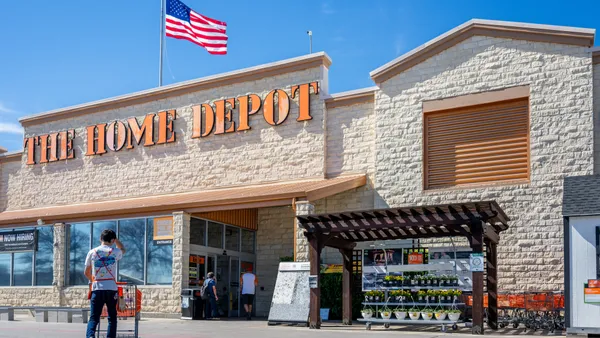Dive Brief:
-
Kohl’s on Wednesday said Q2 net sales fell 4.8% year over year to $3.7 billion, with comps down 5%. Other revenue, mostly the retailer’s store credit card, fell 3.1% to $217 million.
-
Inventory was down 14% year over year. Gross margin declined by 61 basis points year over year to 39%, driven by increases in product cost and shrink but partially offset by lower expenses in freight and e-commerce-related shipping.
-
Net income plunged nearly 60% to $58 million, according to a company press release.
Dive Insight:
Like other retailers reporting their results from the second quarter, Kohl’s said it is encountering consumers who are reluctant to spend unless they find a good deal.
Meanwhile, the department store is in the midst of simplifying its pricing strategies as part of its turnaround. The company is reducing its level of general promotions and eliminating online-only offers, in favor of a more consistent prices, with more targeted offers and clearance events, executives said. But attractive prices are especially important right now, according to CEO Tom Kingsbury.
“We're really focused on delivering as much value as possible because obviously that customer has less money to spend,” he told analysts on Wednesday.
However, the project likely requires more work if Kohl’s is to stay competitive with the likes of Target, which often offer more value on staple items and in categories like home, according to GlobalData Managing Director Neil Saunders.
“This is costing it market share and underlines the fact that Kohl’s needs to look at its price architecture,” Saunders said in emailed comments. “Kohl’s is neither a retailer selling compelling products that justify higher prices nor a retailer that trades on low prices. It is stuck in the middle and in the present economy this is a big problem.”
Like Macy’s, Kohl’s saw revenue from its store credit card slip. However, while Macy’s executives noted that delinquencies were up, Kohl’s CFO Jill Timm said that revenue had declined less in Q2 than in the previous quarter.
Kohl’s continues to tout the traffic and sales benefits of its Sephora shop-in-shops, and the beauty retailer will be in more than 900 Kohl’s stores by the end of the year, Kingsbury said. The shops drove a total beauty sales increase of nearly 90%, with beauty sales comparable growth topping 20% in the Sephora shops opened in 2021 and 2022, according to the company’s earnings presentation.
The department store is also shaking up its assortment somewhat, dedicating more space to home decor and pet supplies. And, also like Macy’s, it is shrinking its store space.
“We've really just begun the analysis ... but one thing we know we're going to do is we're going to open smaller stores,” Kingsbury said, adding that running smaller locations is one way to combat shrink. “The biggest door we’ll open going forward is 55,000 square feet. We'll be adding, probably, a lot of 35,000 square feet.”
The department store remained in the black and cash flow was “solid” in the quarter, thanks to a tight grip on expenses, Saunders noted. But profits were hit hard, and sales fell 17% compared to 2019, during a time when non-food consumer spending rose by 32.1%, according to GlobalData research. Kingsbury told analysts that the goal is to return to topline growth next year.
For this year, the highest expectation should be for “stabilization followed by a rebuilding effort over the next couple of years,” according to Saunders.
“While we believe that Kohl’s has a good management team, we remain cautious about a turnaround in the current environment,” he said.














